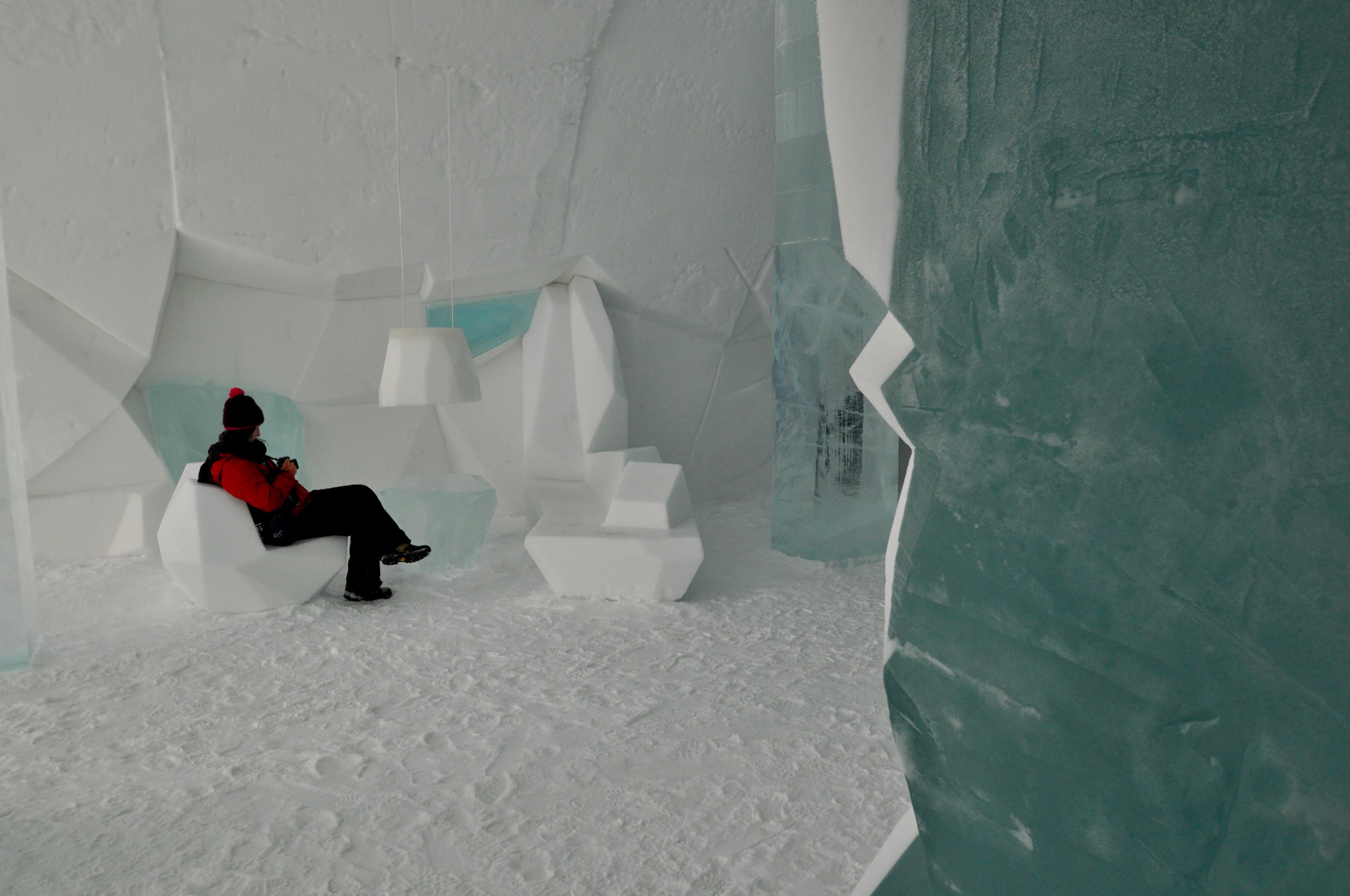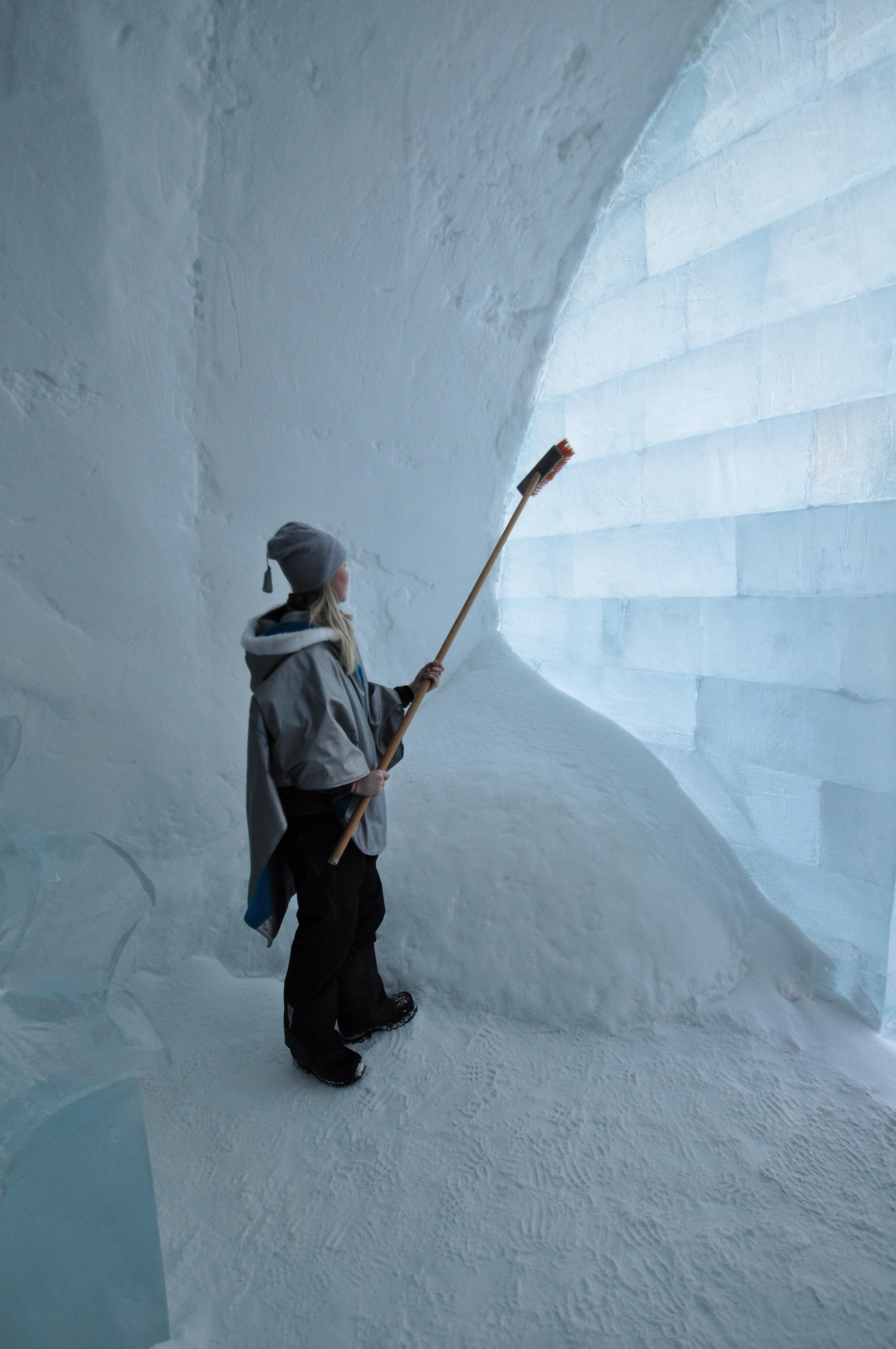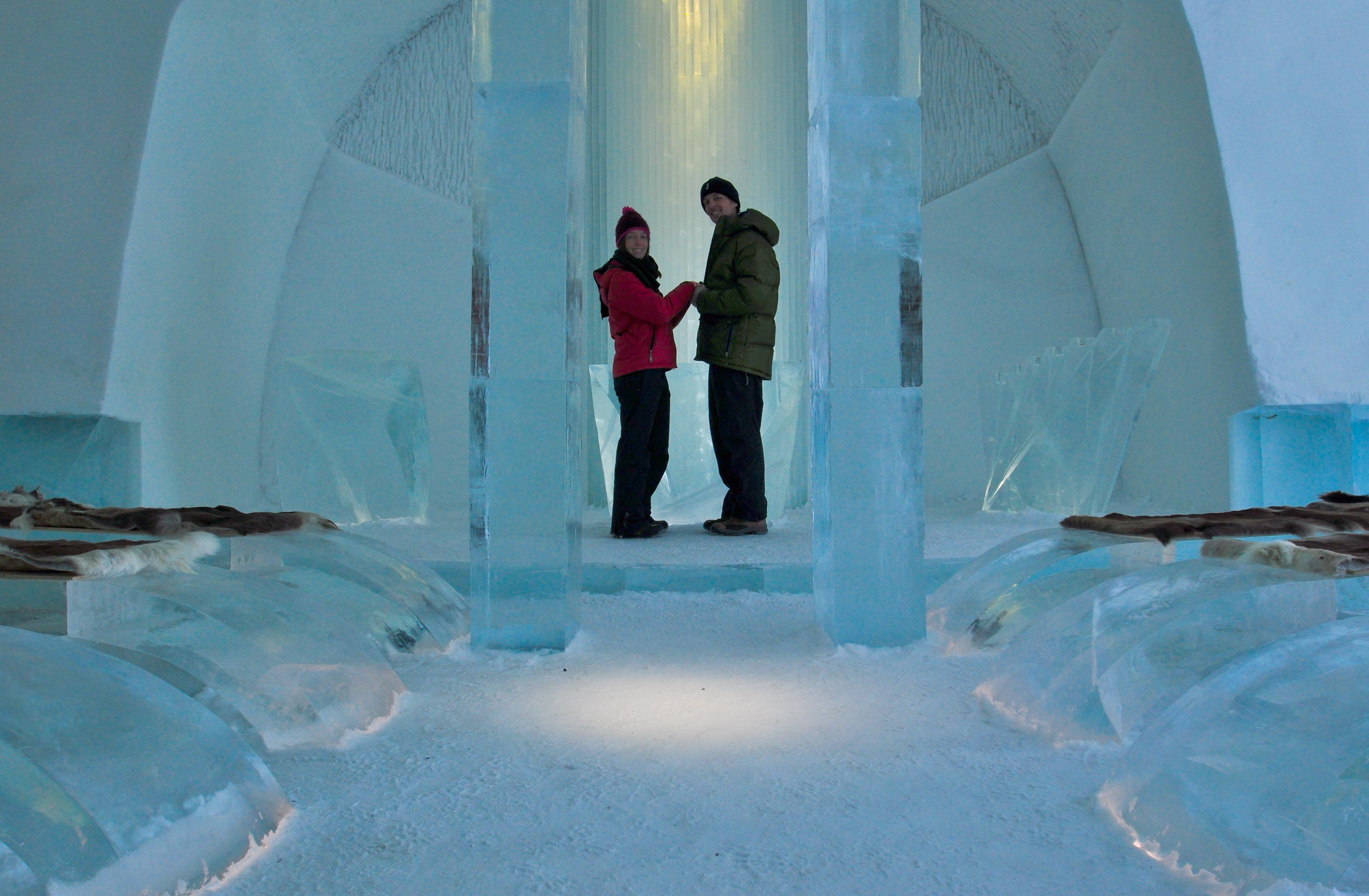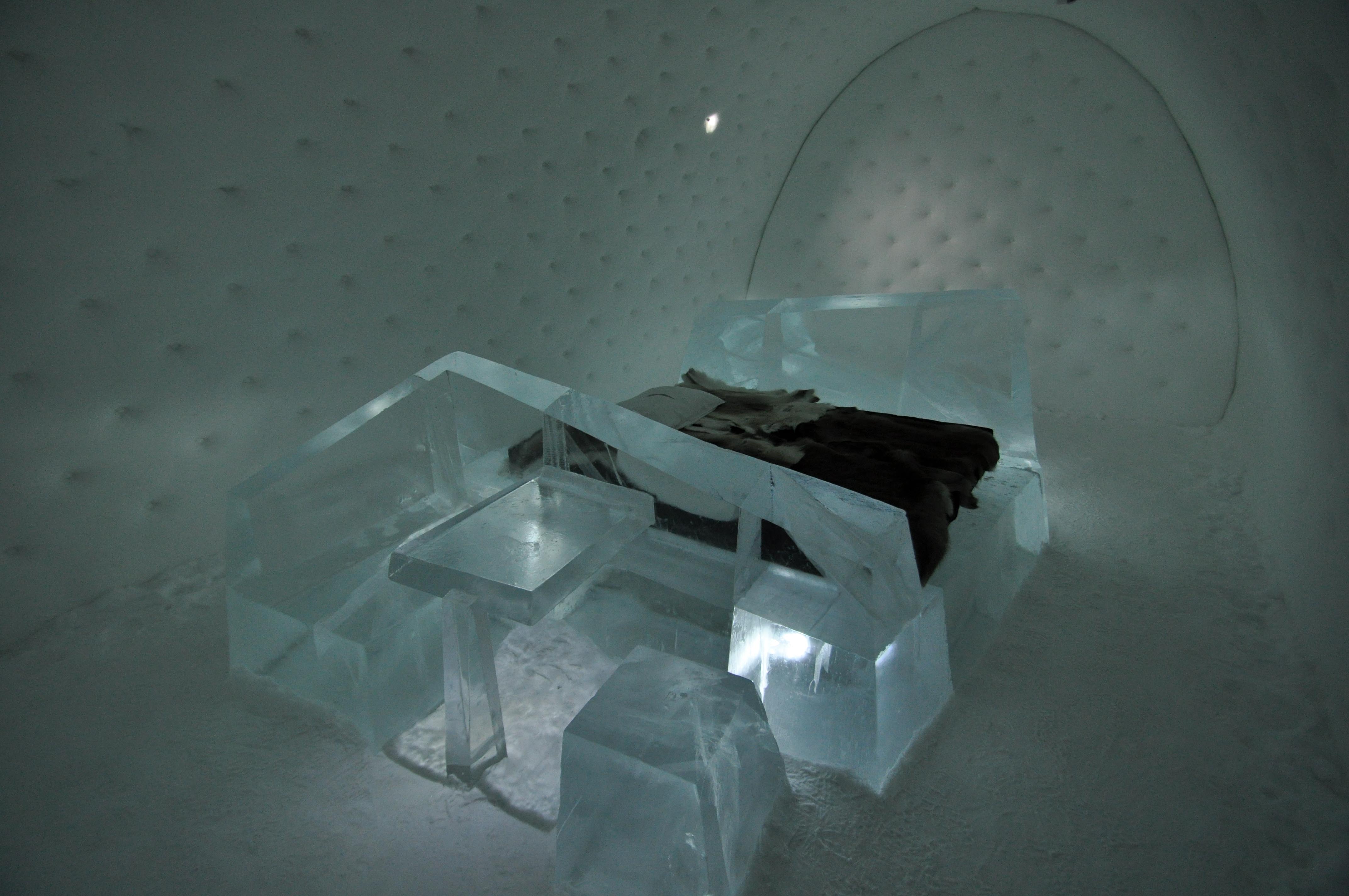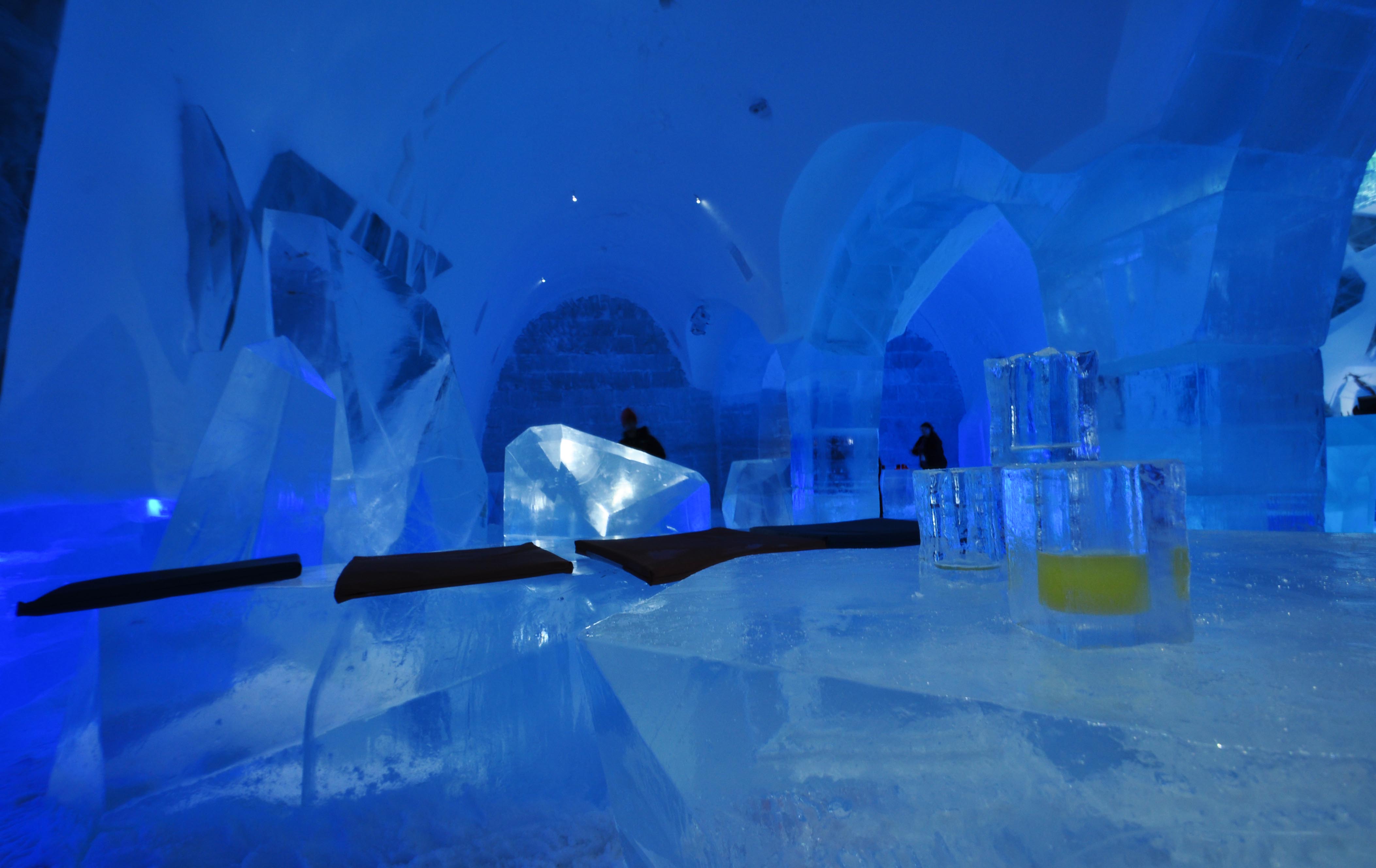An unusual structure like the Icehotel begs practical questions. Where does one go to the bathroom? How does one sleep on a bed of ice? We’ve broken our Icehotel blog into two parts. A Hotel on Hoth is an experiential side of things, while this is more about the logistics. Below are some of the interesting details we learned during our visit.
You don’t have to spend the night. Day visitors are allowed to wander the hotel at their leisure until 6 PM. Those “lucky” enough (and rich enough) to sleep over use a mummy-style sleeping bag atop reindeer hides and a foam mattress. The bed frames themselves are solid blocks of ice. Only a small portion of your face is exposed when you sleep, and (other than a cup of warm lingonberry juice come morning) there are no external heat sources.
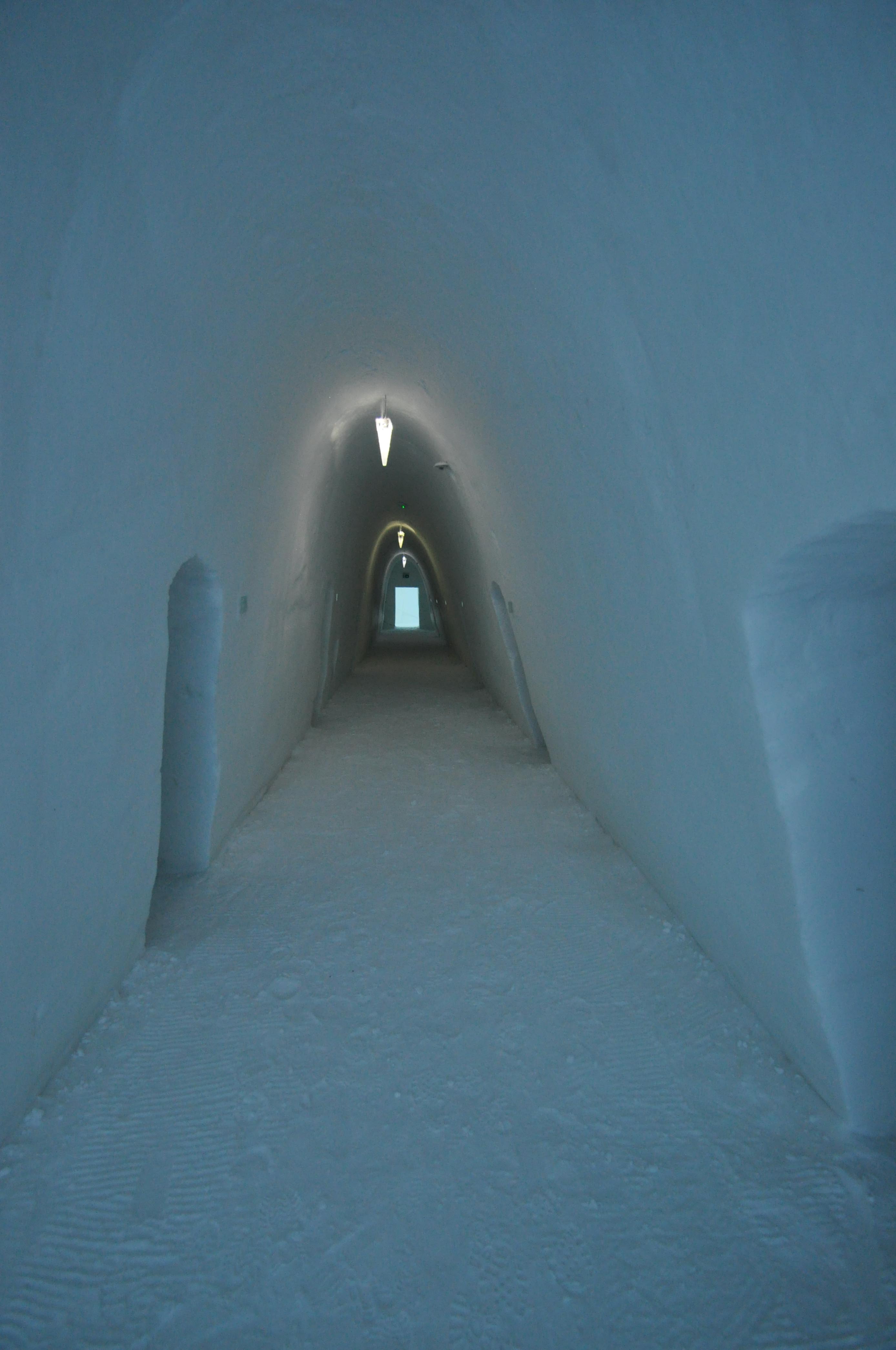 The Icehotel is rebuilt every winter. This year’s structure has 65 bedrooms and is much larger than we expected. The cheapest rooms are basic and feature only an ice sculpture, maybe an ice chair and some moving lights that simulate the aurora borealis. Around 1/3 of the rooms are unique suites.
The Icehotel is rebuilt every winter. This year’s structure has 65 bedrooms and is much larger than we expected. The cheapest rooms are basic and feature only an ice sculpture, maybe an ice chair and some moving lights that simulate the aurora borealis. Around 1/3 of the rooms are unique suites.
Bathrooms are found in a heated building just outside the hotel. There are also warming areas nearby for those who can’t make it through the night.
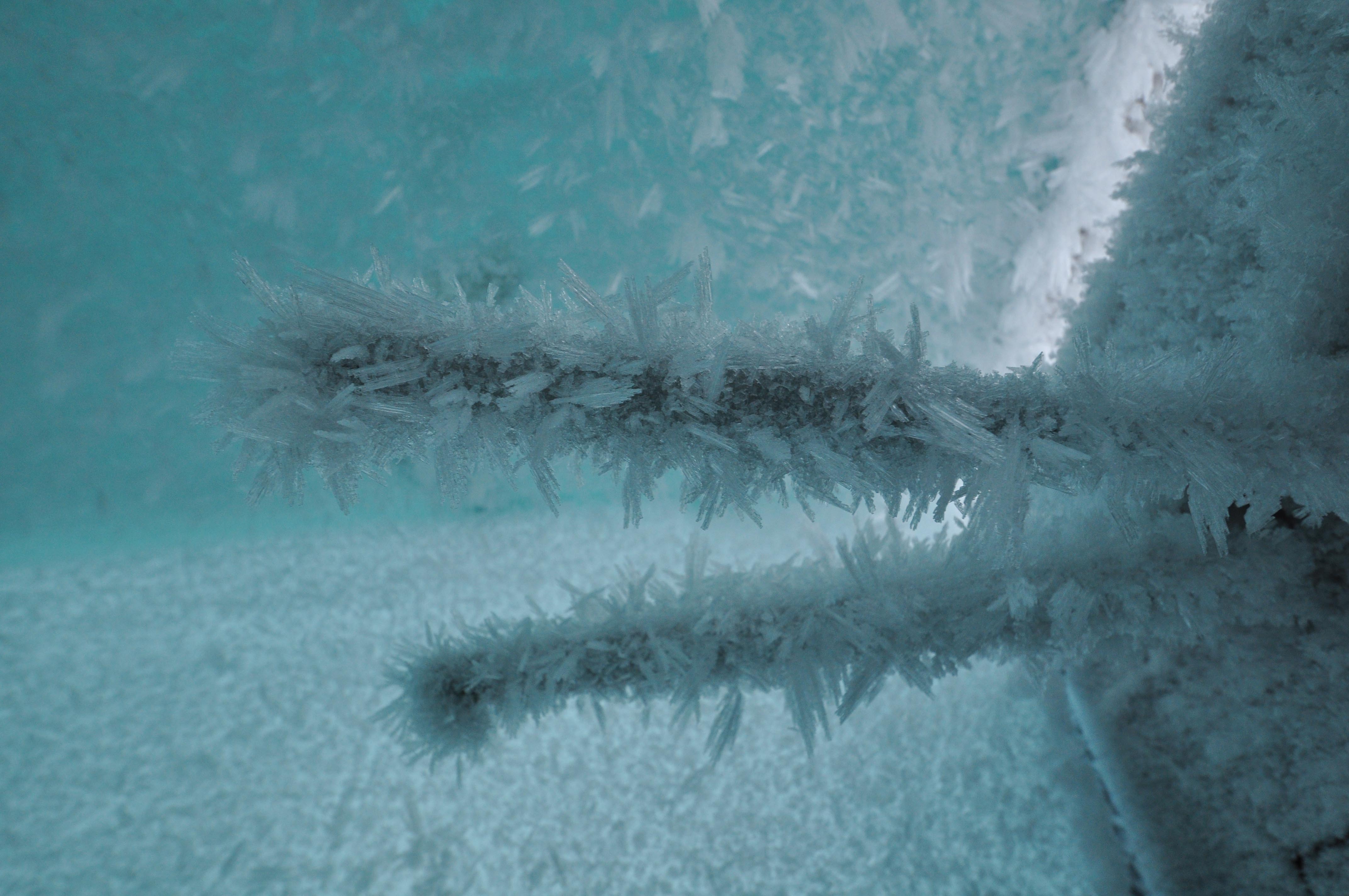 The Icehotel requires constant maintenance. After heavy snows, the staff use snow blowers to remove weight from the roof. Human breathing condenses on ceilings, walls and windows forming ice crystals that must be scraped off daily. Floors compact and become slippery with foot traffic, so hallways must be chipped out and fresh snow added on a regular basis.
The Icehotel requires constant maintenance. After heavy snows, the staff use snow blowers to remove weight from the roof. Human breathing condenses on ceilings, walls and windows forming ice crystals that must be scraped off daily. Floors compact and become slippery with foot traffic, so hallways must be chipped out and fresh snow added on a regular basis.
Every day several weddings and baptisms take place in the ice church. These ceremonies are very short for obvious reasons. During our visit, we saw a marriage party, and the bride’s expression read, “this seemed like a better idea when we talked about it in our warm living room back home.” After all, she was wearing a sleeveless dress and it was cold enough to make your nostril hairs freeze.
Each room has a fist-size hole in the ceiling so that guests don’t suffocate.
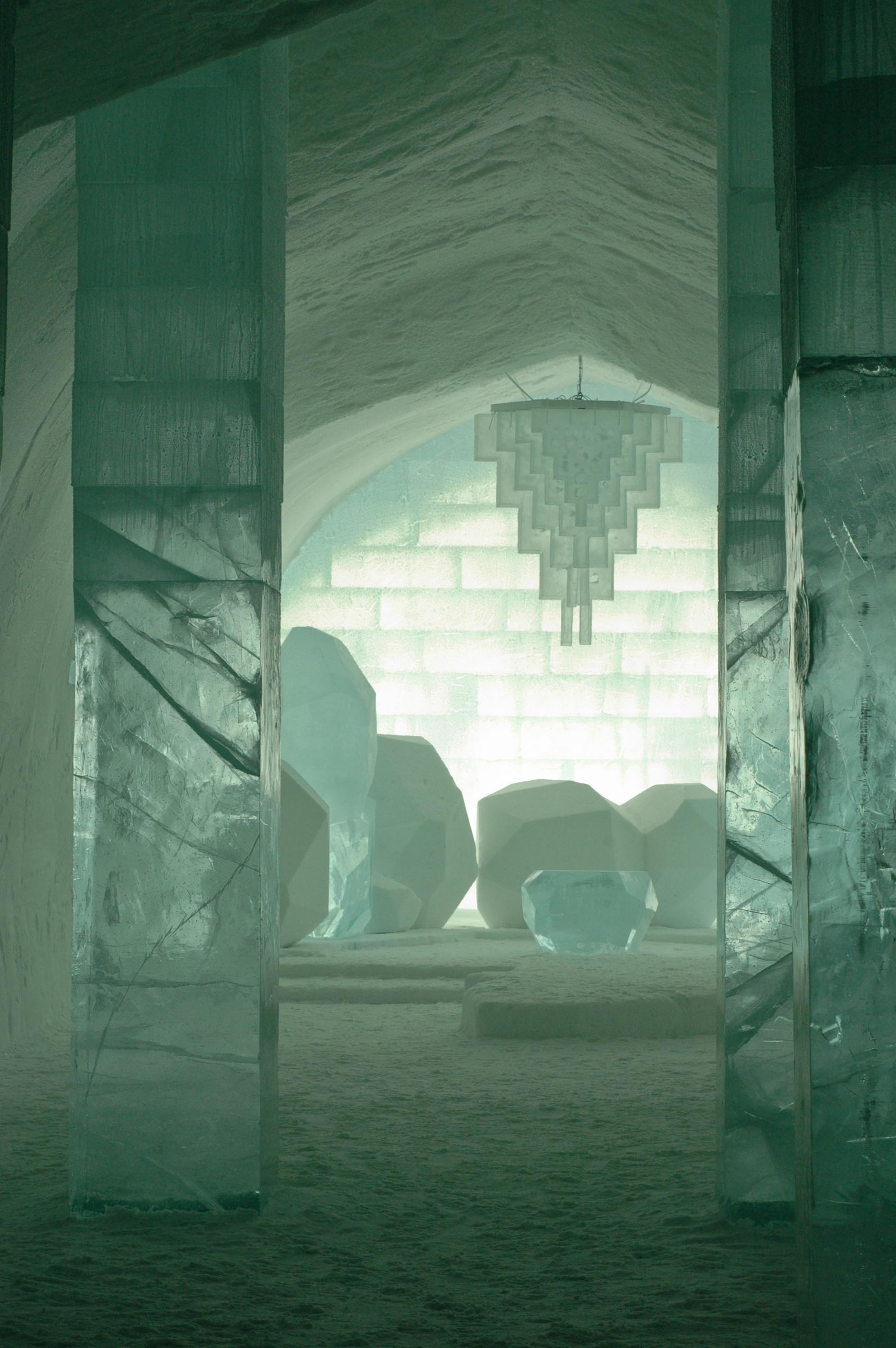 Construction is a year round process. In the spring, 3-foot-thick blocks of ice are removed from the Torne river by hydraulic saws and earthmoving equipment and stored in a warehouse adjacent to the Icehotel. In November, temporary steel arches are erected and “snice” (a slushy mixture of snow and ice) is blown over the frames and allowed to freeze for two days. When the frames are removed, clear blocks of ice are hauled inside to create walls and individual rooms. Blocks are cemented together with clear water. In December artists begin carving rooms and the hotel opens in stages until it is complete in early January. By April the hotel is deemed unsafe and closes for the summer. The entire structure represents about 10 seconds of river flow.
Construction is a year round process. In the spring, 3-foot-thick blocks of ice are removed from the Torne river by hydraulic saws and earthmoving equipment and stored in a warehouse adjacent to the Icehotel. In November, temporary steel arches are erected and “snice” (a slushy mixture of snow and ice) is blown over the frames and allowed to freeze for two days. When the frames are removed, clear blocks of ice are hauled inside to create walls and individual rooms. Blocks are cemented together with clear water. In December artists begin carving rooms and the hotel opens in stages until it is complete in early January. By April the hotel is deemed unsafe and closes for the summer. The entire structure represents about 10 seconds of river flow.
Sweden’s Icehotel was the original (there are now several copycats around the world including one in Quebec). It all started in 1989 at an ice art installation that was stationed at an igloo in the village. Some travelers needed a place to sleep one night and asked for permission to sleep in the igloo. The next morning, they raved about their experience so exuberantly that the idea for the ice hotel was born.
Aside from touring the Icehotel there are plenty of activities in the region including dog and reindeer sledging, snowshoeing, skiing, a native Sami cultural village where you can feed reindeer, ice carving classes, ice fishing, snow driving classes aboard Minis, and of course, there are the northern lights at night.
The Icehotel isn’t cheap – be prepared to drop $800 on the most basic room, but we found it was totally unnecessary. A day visit was perfectly sufficient to experience the wonder. However, give yourself a few days if you want a decent chance of seeing the northern lights and enough time enough to take part in all the activities. There are warm accommodations on the property and several cabins and lodges in the vicinity.
The Icehotel is located about 200 km above the Arctic Circle in the village of Jukkasjärvi, Sweden (pop. 519). The nearest city is Kiruna – about ½ hour by bus. You can reach Kiruna by plane or overnight train from Stockholm.
For more on the Icehotel, read part I of our blog: A Hotel on Hoth
Additional photos can be found on Married To Adventure’s Facebook page (please “like” us while you’re there!)
